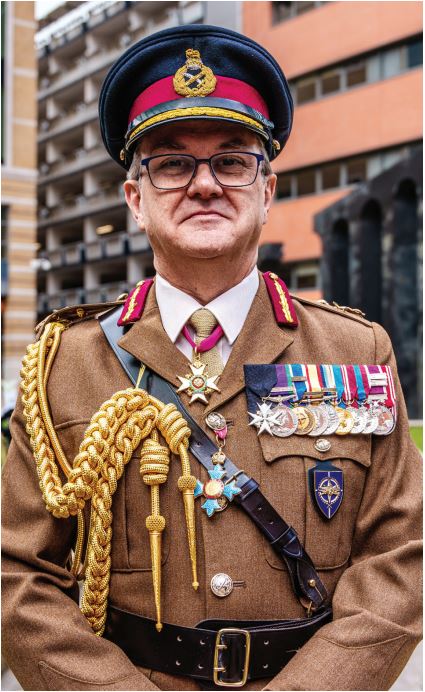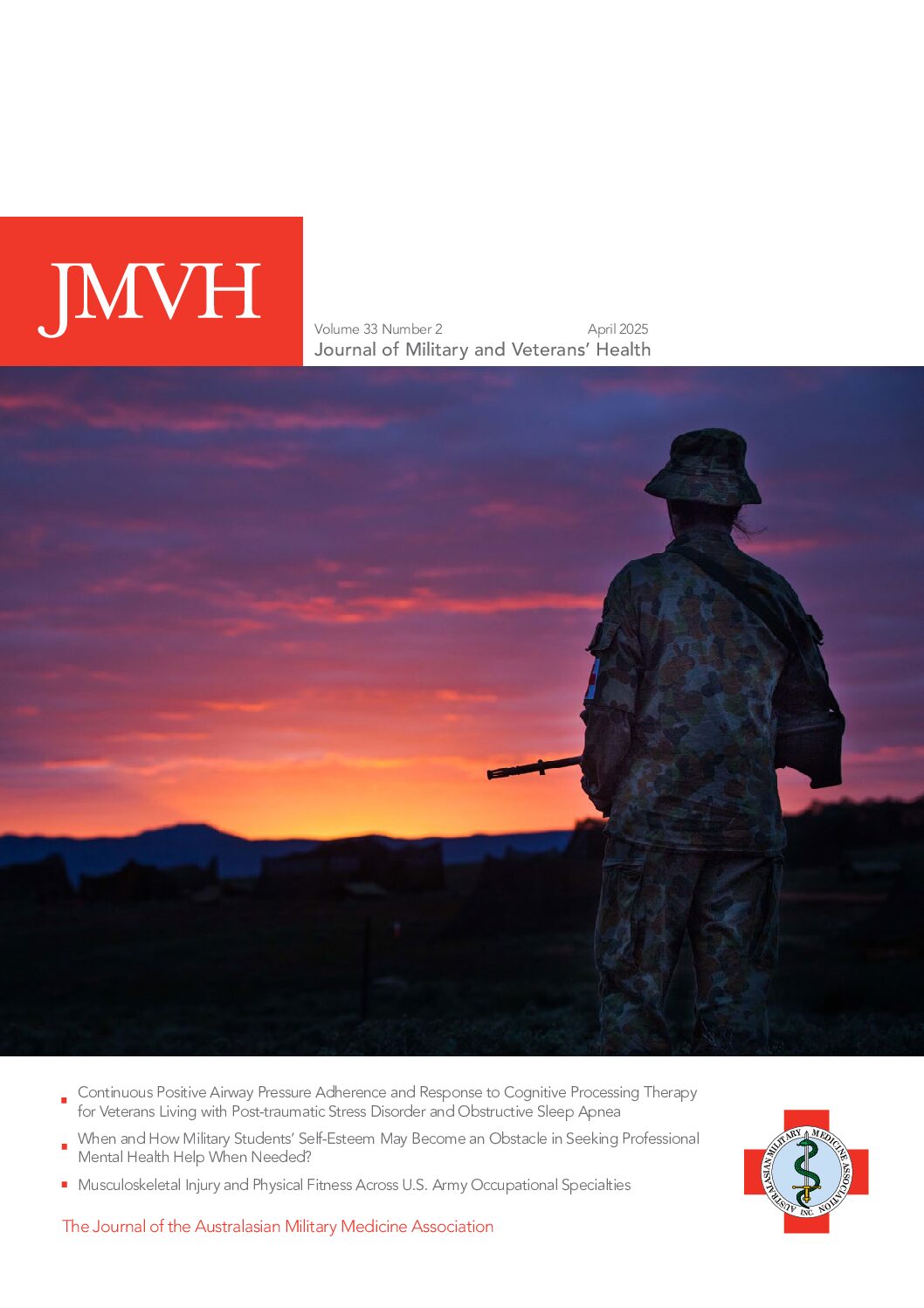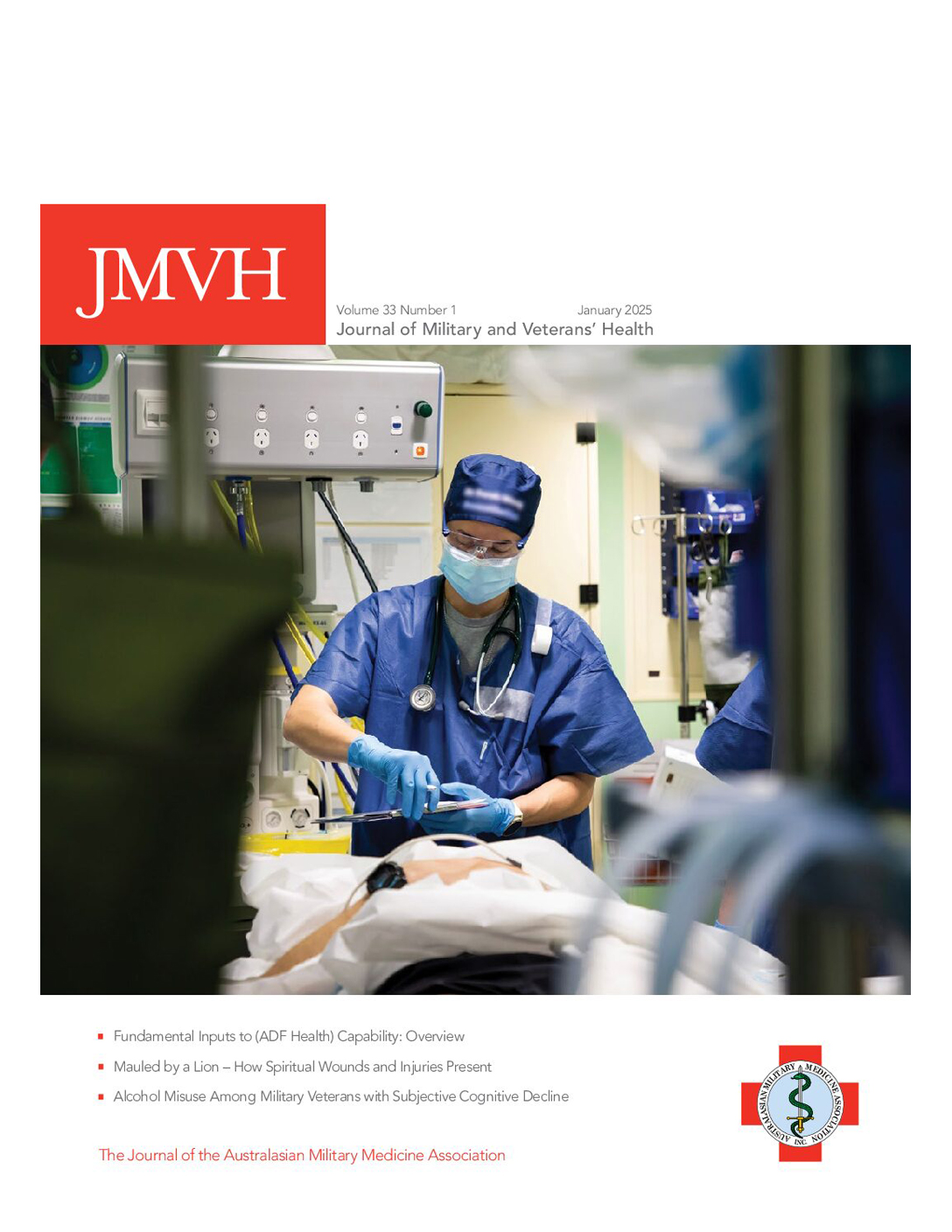 Major General Professor TJ Hodgetts CB CBE KHS DSc PhD MMEd MBA
Major General Professor TJ Hodgetts CB CBE KHS DSc PhD MMEd MBA
Chair, Committee of Chiefs of Military Medical Services
NATO Headquarters, Boulevard Leopold III, Brussels, Belgium
Common Military Medicine Challenges in an Increasingly Unstable World
The 45th International Congress on Military Medicine (ICMM) was hosted in Brisbane, Australia, from 16 to 20 September 2024. For over 100 years ICMM has provided a neutral forum for now over 100 countries to share medical advances towards a single common aim—to collectively improve the outcomes of our patients. The opening plenary address was delivered by the Committee of Chiefs of Military Medical Services Chair in NATO (colloquially known as ‘COMEDS’), the senior medical adviser position within the NATO security alliance of 32 states. To set the scene for the conference, the theme was the military medicine challenges that all nations face in an increasingly unstable world, taking illustrations from the United Kingdom’s experience and the speaker’s former role as Surgeon General. This editorial is a transcript of the speech delivered by Chair COMEDS.
The start point is the common global context in which we all exist as clinicians within military medicine and to consider our role in three environments—a future pandemic, a natural disaster and war. In the last 20 years, we have experienced a recurring cycle, roughly every 5 years, of a virus spreading internationally in epidemic or pandemic proportions. Most of our countries were incompletely prepared to deal with the scale of seriously ill patients in the COVID-19 pandemic, and many turned to their military health services for support with emergency planning, medical logistics and reinforcement for their overstretched civilian health services. Indeed, how our military health services are viewed within our nations has been reset. It should, therefore, be predictable that in any future epidemic or pandemic, our help will be sought early. But public and corporate memories are short, and it is our duty to sustain this hard-learned lesson from our shared contemporary military history.
The prevalence of natural disasters is increasing. In the 40 years from 1980, the global prevalence has risen almost fourfold. Some countries, particularly those with large standing armies, have integrated their militaries to take a leading role in the rapid humanitarian response. In others, and the UK is an example here, the military is regarded as a ‘last resort’, but when selected, it repeatedly demonstrates its agility, flexibility, self-sufficiency and clinical utility. Whatever the historical national politics, if natural disasters are set to keep rising, then the logic must surely be to enhance the civil-military collaboration in response to them, using all the available capable assets to full effect in the interest of humanity.
As military clinicians, we experience the appalling human consequences of war. Yet, as military officers, we understand that when our national interests or national security are threatened, and both diplomatic and economic levers of influence have failed, then war becomes a recurring inevitability. Today, I feel the world is more geopolitically unstable than at any time in my 40-year career. We have war on the European continent and the threat of a political miscalculation, which may lead to rapid expansion through invoking NATO Article 5, noting if any member state asks for help when attacked, all will respond. Indeed, our European leaders have consistently messaged publicly this year that we are ‘in a prewar era and must be prepared to fight an increasingly aggressive Russia’.In addition, we have war established in the Middle East for almost one year that shows no sign of imminent resolution, that involves proxy State actors, and that retains the worrying possibility of further regional expansion. And for this part of the world [where ICMM is taking place], where Asian and Australasian security is foremost in your minds, then conflict is threatened through existential tensions in the Korean Peninsula and the South China Sea.
So, what are our shared challenges, and what can we do to mitigate the medical risks that we all collectively hold, with the common aim of improving patient outcomes? This is something that I, and my Surgeon General colleagues in NATO, have given a great deal of thought to. These considerations have, of course, been driven by Russia’s invasion of Ukraine and our reflection on NATO’s medical capabilities and capacity to deal with enduring large-scale casualties from combat operations. It has resulted in shared medical risks being considered in five broad themes within a Medical Manifesto approved by the Heads of State at the Washington Summit in July this year, which I believe is highly transferable to this whole audience. I can, of course, only give you headlines and principles, not any detail, for obvious reasons of security.
The first shared challenge is workforce, and you will all be only too aware of the global healthcare worker shortage. Two solutions present themselves in partial mitigation. One is multinationality, and we know this works. We’ve been doing this in NATO since the Balkans in the 1990s and again successfully in Iraq and Afghanistan, where we deployed a framework nation hospital supported by individual augmentees or clinical teams from one or more other nations. It’s made easier by training together in advance— but that’s not essential. In Mali in 2022, a British surgical team and a Swedish blood bank team reinforced a German Role 1 during a major incident of German casualties without prior exercise or joint training. It worked.A parallel solution is for enhanced civil-military collaboration, and this is at the heart of NATO’s Medical Support Capstone Concept launched in 2022, and it has driven civil-military integration across the headquarters in the last 2 years, specifically between the military COMEDS committee of surgeon generals and the civilian Joint Health Group of national clinical representatives. Indeed, we have convened combined strategic meetings of civil and military national healthcare leaders to discuss joint plans for large-scale combat operations. Yet, we must be clear that greater civil-military collaboration is not a substitute for investment in military people capability.
The second shared challenge is medical logistics and how we sustain support for the treatment of a high volume of casualties. One thing COVID taught us was that our supply chains are vulnerable if every nation is demanding against the same supplier, or we are overly reliant on imports and the supply chain becomes contested. This forces us to consider holding more stock—and as one example, UK Defence has committed the funds to substantially uplift our medical consumable stockpiles while doing this intelligently to limit future waste through discussion with our civilian National Health Service on stock rotation. It is also essential to consider what consumables need to be manufactured in your own country, which is what we call a ‘sovereign capability’. Again, one example from the UK is to now manufacture our own freeze-dried plasma, which provides some mitigation to forward provision of blood products in austere environments.
The third substantial challenge is preparedness for mass casualties. Peer-on-peer war will mean a sustained a high number of casualties, necessarily managed by finite medical facilities that will be regularly overwhelmed. The irony has not escaped me that my military medical career started in the Cold War, based in a military hospital in Germany where we were prepared for defence against a Russian invasion. We had an annual exercise to deploy to our field hospital locations, which were predetermined. The infrastructure and equipment were basic and were designed for ‘good enough’ care for the many in large-scale combat operations, not the exquisite care for low numbers of casualties that has become the expectation from our extraordinary patient outcomes in Iraq and Afghanistan earlier this century.
Today, we do recognise how our proven high clinical capability but low residual capacity is a strategic mismatch. It follows the decades of peace dividend in Europe since the end of the Cold War that have resulted in serially smaller standing armies. Yet despite my career being dedicated to driving up clinical standards and improving outcomes from serious injury in asymmetric operations, I have the uncomfortable realisation that the basic level of hospital care we were providing in the 1980s was perhaps a more realistic expectation of what can be delivered in peer-on-peer war.
So, we need to think of how we prepare for enduring mass casualties from two aspects. These are our requirements in the home nation and our requirements within any overseas theatre of war. In the home nation, we can refer to our preparedness process as ‘RAMP’, or Reception Arrangements for Military Patients. In the UK, our process has served us well for over 20 years. We have brought nearly all injured and sick Service personnel back to a single hospital in Birmingham, the Royal Centre for Defence Medicine. But this plan won’t work for large numbers of patients. It will have to become scalable from our historic environment of asymmetric low[1]intensity conflict all the way through to high[1]intensity warfighting, which will necessitate national casualty redistribution. And importantly, these medical precepts are being inculcated into a new National Defence Plan.
Of note also is how we prepare our civilian clinical staff who are typically unused to managing blast and ballistic injury, because our civilian hospitals will provide the capacity to receive our military patients. In this respect, the UK has prepared because, in 2017, we published clinical guidelines for all civilian hospitals1 that were derived from our military guidelines first written in 2003. Our imperative in 2017 was to create effectiveness to deal with casualties of terrorism, but of course, the principles clearly apply to casualties of war. How you create additional rehabilitation capacity to get soldiers back to the fight is another challenge. It is one the UK planned for in 1991 for the first Gulf War when we decided to repurpose existing holiday camp infrastructure.
A good deal of effort has been invested in NATO through the Emergency Medicine Panel to create a series of new precepts for managing an enduring mass casualty challenge, whether at home or on expeditionary operations. This has been Ukraine’s experience for two-and-a-half years. In our peacetime civilian experience of a plane crash, a train crash or a terrorist bomb, we have principles to deal with a casualty surge at a point in time. But what if that surge is an enduring pressure wave? Reassuringly, we now have the ‘8 Ds’ to give a consistent approach in a resource-poor environment, which you can find in Open Access publications.2
The fourth challenge is casualty movement capacity both tactical to the first surgical facility and strategic across international borders. Tactical evacuation using protected mobility has been a consistent high priority for support that Ukraine has sought from the international community. We know that clinical outcomes are directly related to the time to surgery, and without timely evacuation, there will be an excess of avoidable deaths that we see expressed in the Killed in Action to Wounded in Action ratio.
When it comes to strategic evacuation between countries, there will be finite military assets, and we will turn to commandeering civilian assets to create the capacity to move by air, sea or rail. For reversionary methods, such as rail and buses, which we effectively used 100 years ago, we must re-learn old lessons and re-invest in the flexibility to use these means. The conversations are certainly being held with relevant national government agencies and at the international level for how we would move patients across the European continent and stage through strategic evacuation hubs from where national teams may retrieve their own patients for the last part of the journey. This process is encapsulated within NATO’s Patient Management Flow Directive, which has been pressure-tested and refined on serial exercises over the last two years.
The final domain to consider is regulatory constraints, which are a potential fire blanket to interoperability. At the heart of NATO’s effectiveness as an alliance is interoperability, with the ability to work together to amplify the medical effect and to burden-share the medical risk. But the clinical professions are heavily regulated and we carry forward national regulations into a deployed multinational environment, where they can create obstacles to this necessary interoperability. Managing this at the tactical or even operational levels creates time-consuming bureaucracy, which is why it is a strategic priority and opportunity to unlock. Yet this is somewhat artificial because doctors will be doctors. If a sick patient of another nation needs blood, they will get blood. In war, I am certain that clinical pragmatism will prevail because our operational experience has shown it to be true.
What perhaps worries me more is that we are bound by a treaty, the Geneva Convention, that we observe being widely and consistently abused. The Red Cross has become a targeting symbol in order to undermine the moral component of fighting power. While NATO will continue to obey the principles of the convention we do realise that the same behaviour is not expected of future adversaries, including Russia. In this context, an open display of the emblem may be dangerous, leading to a need for camouflage and concealment of medical facilities that would have previously been advertised.
While I have said there are five principle challenges, there is a sixth consideration—and that is the application of hard-won lessons from contemporary conflicts. I have codified medical lessons learned from Russia’s war against Ukraine within an article published last year in Open Access.3 I have called them the ‘Dirty Dozen’ lessons, and I have confirmed their validity with the Ukraine Surgeon General directly.
In parallel has been the US Army’s independent analysis of lessons from the war,4 which notes that the findings are very similar and reinforcing to those made by the UK. I would like to also draw attention to the Ukraine Medical Study Group’s work to manage a series of focused lessons symposia in Warsaw, funded by US DoD, and capturing key observations and experience of Ukraine Armed Forces’ medical personnel, together with foreign nationals who have been in country to deliver care. NATO’s Military Medical Centre of Excellence in Budapest has also captured lessons from across the alliance, from provision of equipment and training through to treatment of casualties evacuated to allied nations.
Importantly, it is through the analysis and synthesis of these lessons that we will gain the wisdom to continuously drive capability development for our war injured. It is a recognised and recurring paradox that medicine advances in war with military-led medical innovation, driven by the casualty imperative, translating into parallel civilian healthcare benefits. This sharing of medical advancement between nations and across the civil-military healthcare enterprise is the very precept on which ICMM was founded in 1921. I urge you to exploit the unusual opportunity from this conference to its full—to make connections, to build relations, and to share experience—so that even in the undesirable event of war, we can guarantee that one survivor will be our shared humanity and our shared purpose as military doctors—which is our primary and unifying aim to do the very best for our patients.






